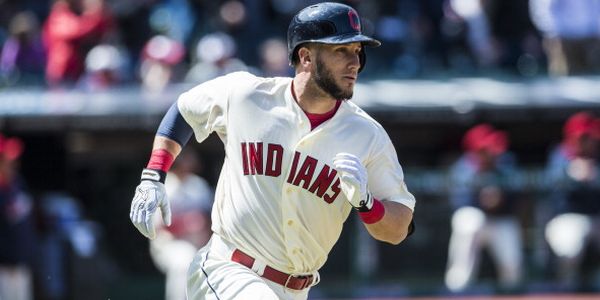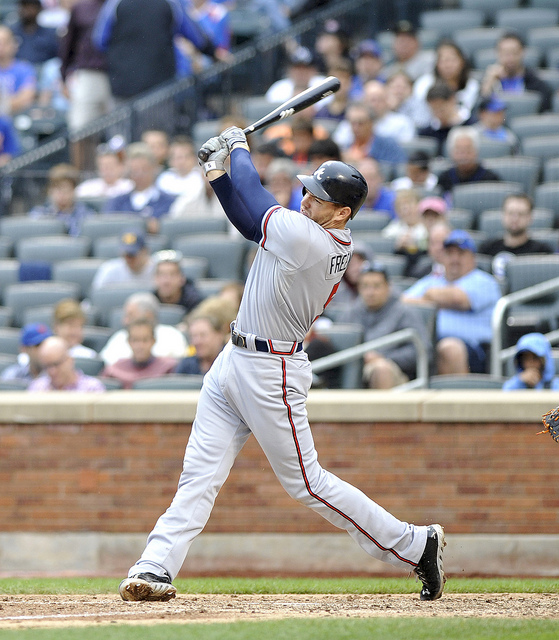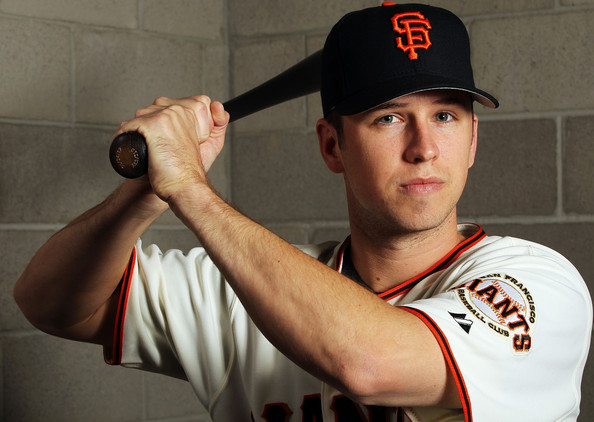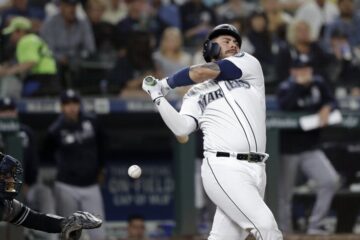2015 Fantasy Baseball: Plate Discipline — Catchers

Everyone that studies baseball even in their spare time has pet projects and numbers they love to explore. For me, I love to explore different fielding metrics and plate discipline numbers. I’ve talked about fielding numbers on this site before, but that has a very limited shelf life when it comes to fantasy baseball. My bosses will indulge me some, but they’d run me out on a rail if I spent more than a few articles on it.
Plate discipline, on the other hand, has some very direct impacts on your fantasy team. The tale of Josh Hamilton and his collapse in Los Angeles owes its direct link to plate discipline. If you study his 2012 numbers, you can see the seeds of his demise being planted. A number of fantasy players ignored that to their own peril in 2013. The same can be seen at every position. Before we dive into those numbers we should delve into the different categories themselves to discuss what we are talking about.
Statistics like these can be divided into two separate categories: results data and process data. The results data is the data we look at directly for our fantasy teams. In plate discipline, we are talking about strikeouts, walks, and strikeout to walk ratio. When we compare our players we will look at the median scores for qualifying catchers. That median score gives us a frame of reference so we can know what is supposed to be good and bad. For catchers, we had 21 catchers that have served as regular catchers for three or more seasons, so the median score was the 11th ranking in each individual category.
Process data is the data that helps explain the results data. These statistics include Oswing, contact percentage, and swinging strike percentage. Oswing is simply the percentage of balls a hitter swings at that come outside the strike zone. The other two are pretty self-explanatory. Most of the time, the process data will match the results data, but sometimes that isn’t the case. When it isn’t the case we might have cause to think there will be sudden improvement or sudden decline. It also could indicate that someone just isn’t as talented as we thought. Again, we will look at median scores for a frame of reference.
This time around, we will divide catchers into three groups. The first group are the star performers that are owned 100 percent of the time and in just about everyone’s starting lineup. The second group might be starters or will at least be on someone’s bench. In other words, they are drafted in most leagues. The last group represents the players that are left on most league’s waiver wires. Since 99 percent of you have already had your draft and the season has started, these will be the guys you will probably pay attention to. Of course, the others are players you might focus on in terms of trades.
The Studs
| SO% | BB% | SO/BB | OSwing | Contact% | SwStr | |
| Buster Posey | 13.2 | 9.1 | 1.45 | 27.2 | 85.4 | 6.1 |
| Carlos Santana | 18.0 | 15.6 | 1.15 | 22.6 | 79.9 | 7.5 |
| Jonathan Lucroy | 13.9 | 7.7 | 1.81 | 31.3 | 86.6 | 5.8 |
| Yadier Molina | 9.2 | 7.1 | 1.30 | 29.7 | 87.2 | 6.3 |
| Yan Gomes | 23.0 | 5.0 | 4.60 | 36.9 | 76.9 | 11.3 |
| Devin Mesoraco | 20.1 | 8.3 | 2.42 | 34.0 | 76.7 | 11.3 |
| Median | 18.0 | 9.1 | 1.98 | 28.1 | 80.1 | 8.1 |
Frames of references are always important, but sometimes they are extraneous. If we were to phrase this like an SAT question, we could simply ask which of these players don’t belong. Does this mean that Yan Gomes and Devin Mesoraco are destined to fail? That would be taking it too far, but I would keep an eye on them. In Mesoraco’s case, he came out of nowhere last year, so these career numbers may not be indicative of the player he currently is. Then again, some of the process numbers above were actually worse in his breakout season last year.
Gomes is more traditional case since he has had success ever since he was inserted into the lineup on a regular basis. His numbers have the look of a player that could come back to the pack significantly. The league has a funny way of adjusting to you once it gets a book on you. That is the primary reason why we’ve left out catchers with less than three years of experience. Gomes has been a regular for two years, so he barely qualifies. Buyer beware.
Secondary Starters and Bench Players
| SO/9 | BB/9 | SO/BB | Oswing | Contact% | SwStr | |
| Wilin Rosario | 21.9 | 4.8 | 4.56 | 39.6 | 73.2 | 13.8 |
| Matt Wieters | 18.3 | 8.5 | 2.15 | 31.6 | 81.0 | 8.7 |
| Salvador Perez | 12.2 | 3.9 | 3.13 | 41.5 | 87.0 | 6.6 |
| Brian McCann | 14.5 | 9.1 | 1.59 | 28.1 | 84.2 | 7.0 |
| Russell Martin | 15.8 | 11.6 | 1.36 | 21.9 | 81.4 | 7.4 |
| Wilson Ramos | 16.1 | 6.6 | 2.44 | 35.6 | 79.8 | 10.5 |
| Derek Norris | 22.7 | 11.4 | 1.99 | 23.8 | 80.1 | 8.1 |
| Yasmani Grandal | 22.1 | 13.6 | 1.63 | 24.8 | 77.6 | 8.9 |
| Miguel Montero | 19.5 | 9.7 | 2.01 | 31.1 | 78.8 | 10.2 |
| Median | 18.0 | 9.1 | 1.98 | 28.1 | 80.1 | 8.1 |
Ostensibly, we are looking at players that are borderline fantasy factors. Some of the players on the next list may have been drafted in your league. One or two of these guys may not have been. You’ll adjust accordingly. By the time we get here in a draft we are looking for potential sleepers. That can be seen in the guys that far outproduce the median catcher. This is particularly true when looking at the process data. In particular, Derek Norris, Yasmani Grandal, Brian McCann, and Russell Martin look like good bets.
I’m almost certain that Martin and McCann were selected in your league. Grandal and Norris may not have been and they are both in new homes this season. They may be solid bets on the waiver wire. On the other end of the spectrum we have Wilin Rosario and Salvador Perez. Rosario has already lost his everyday job. Some of that has to do with a change in philosophy in Denver in terms of fielding. The other has to due with the fact that the league is starting to catch up with a free swinger. Perez may end up suffering the same fate offensively.
The Waiver Wire
| SO/9 | BB/9 | SO/BB | Oswing | Contact% | SwStr | |
| Alex Avila | 26.4 | 12.8 | 2.06 | 22.4 | 73.6 | 10.7 |
| Jason Castro | 25.3 | 9.0 | 2.81 | 28.3 | 76.7 | 10.5 |
| Chris Iannetta | 22.8 | 14.2 | 1.61 | 19.8 | 74.6 | 11.0 |
| Kurt Suzuki | 11.5 | 6.4 | 1.80 | 25.2 | 87.5 | 5.3 |
| Jarrod Saltalamacchia | 30.0 | 9.0 | 3.33 | 31.7 | 70.2 | 14.3 |
| Carlos Ruiz | 11.4 | 9.9 | 1.15 | 23.0 | 87.6 | 5.0 |
| Ryan Hanigan | 10.7 | 11.6 | 0.90 | 22.0 | 90.6 | 3.5 |
| Median | 18.0 | 9.1 | 1.98 | 28.1 | 80.1 | 8.1 |
Let’s begin with the obvious. You want to know who the sleepers are and these numbers should deliver the answers loud and clear. Ryan Hanigan, Carlos Ruiz, and Kurt Suzuki have the contact numbers to make an impact. Unfortunately, none of them are good power sources and that is why they have gone undrafted. However, recent changes might make Hanigan more attractive. Christian Vazquez is out for the year with a shoulder injury, so Hanigan and newly acquired Sandy Leon will share the catching duties. Hanigan will get the bulk of those starts.
As for the others, they bring to mind one of the funnier exchanges on South Park. Chef was coaching the kids for a dance competition. He told them, “you have the soul but you don’t have the heart. No, you have the heart but you don’t have soul. No, you have the heart and the soul, but you don’t have the talent.” The process data shows that these guys aren’t making enough contact. In most cases, they aren’t swinging on balls outside the zone. They just aren’t good enough to hit the pitches in the zone. Such is life in the big leagues I guess.





